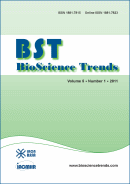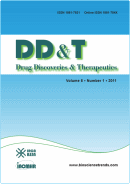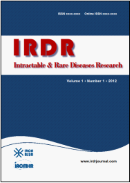BioScience Trends. 2007;1(1):26-32.
High-resolution mapping of copy number aberrations and identification of target genes in hepatocellular carcinoma.
Midorikawa Y, Tang W, Sugiyama Y
Hepatocarcinogenesis involves complex combinations of molecular events, such as genetic aberrations, epigenetic changes, and alterations in gene expression. To elucidate the mechanism of hepatocarcinogenesis, it is necessary to reconstruct these molecular events at each level. This article presents a review of copy number analyses of hepatocellular carcinoma (HCC) using traditional comparative genomic hybridization (CGH), arraybased CGH (aCGH), and single nucleotide polymorphism (SNP) arrays. A number of studies have applied CGH technology for copy number analysis of HCC and have indicated the significance of correlations of frequent genomic aberrations with various clinicopathological parameters, prediction of recurrence and prognosis, and treatment selection, followed by comprehensive genomic analysis using aCGH with much higher resolution. Furthermore, we present our data regarding genomic aberrations of HCC obtained using the Genome Imbalance Map (GIM) algorithm, which simultaneously detects DNA copy number alterations and loss of heterozygosity using SNP arrays, and the Expression Imbalance Map (EIM) algorithm, which detects mRNA expression imbalance correlated with chromosomal regions. Using these two algorithms, we integrated the expression profiles, locus information, and genomic aberrations in a systematic manner, which is effective for detecting structural genomic abnormalities, such as chromosomal gains and losses, and showed that gene expression profiles are subject to chromosomal bias.







